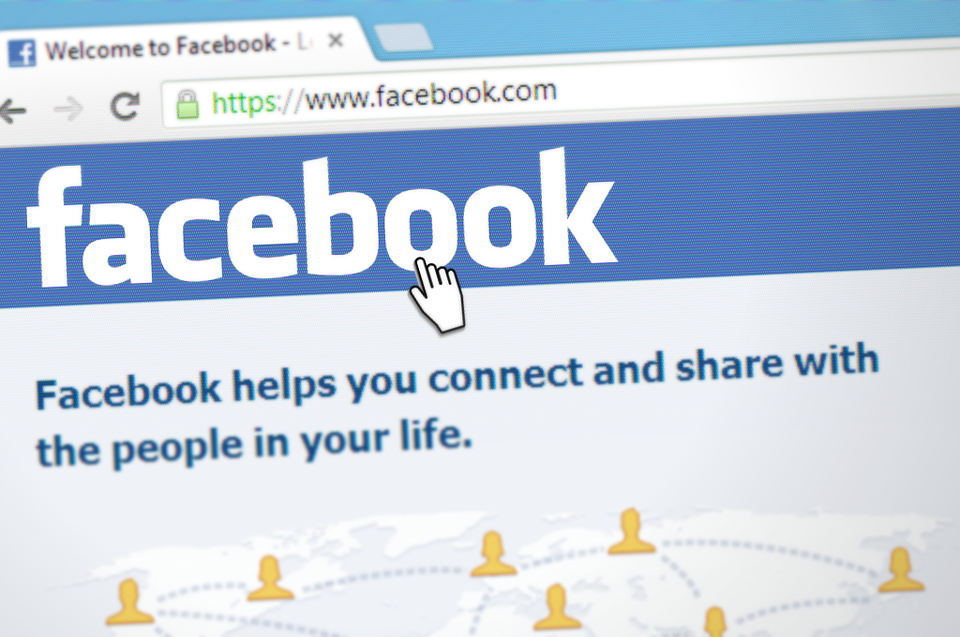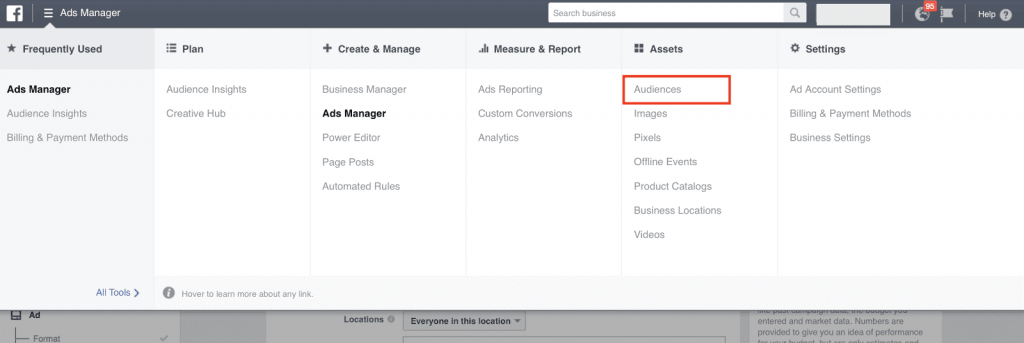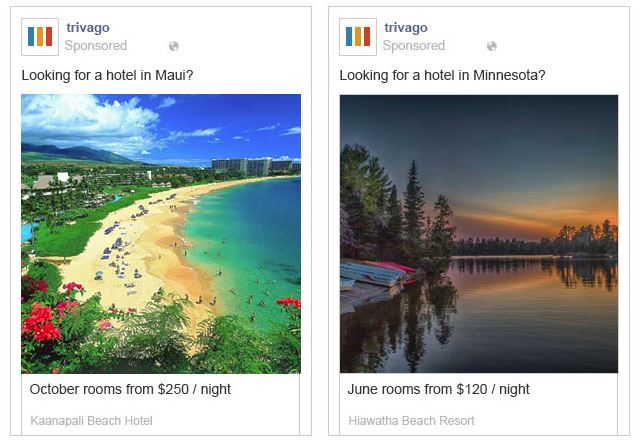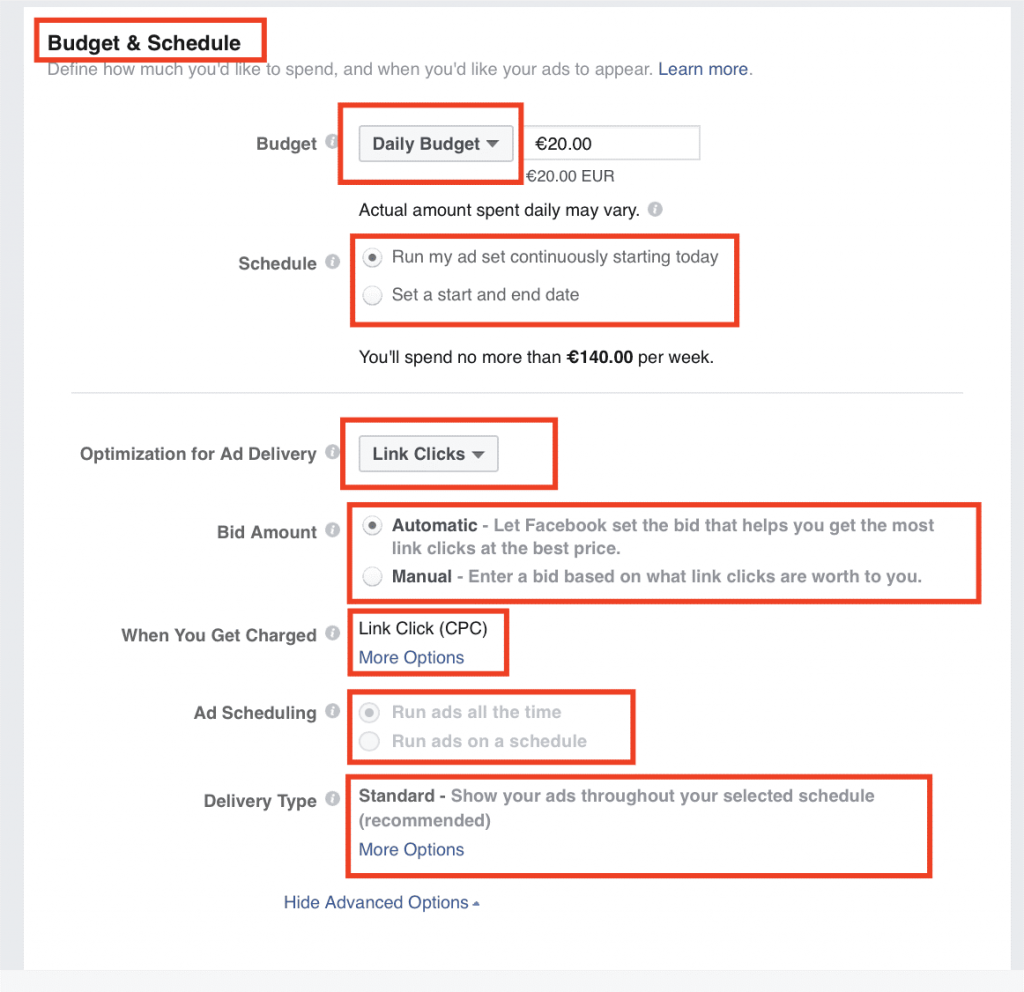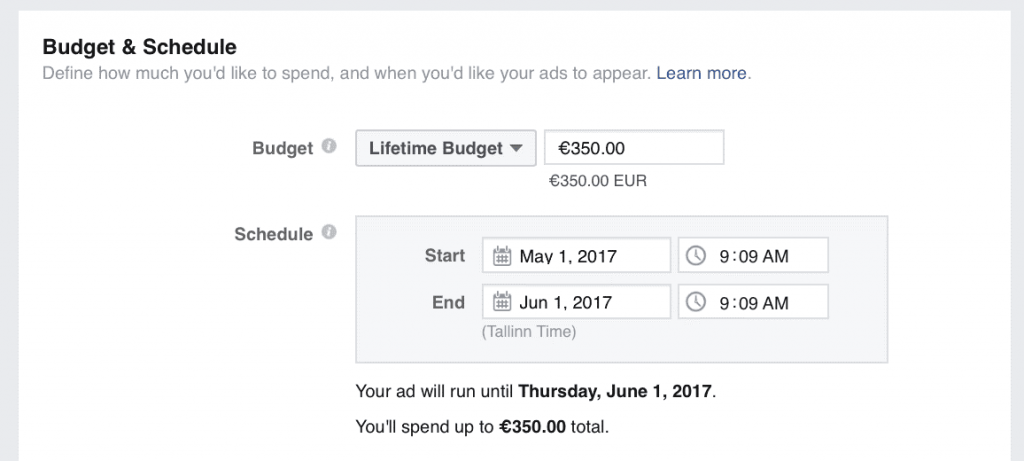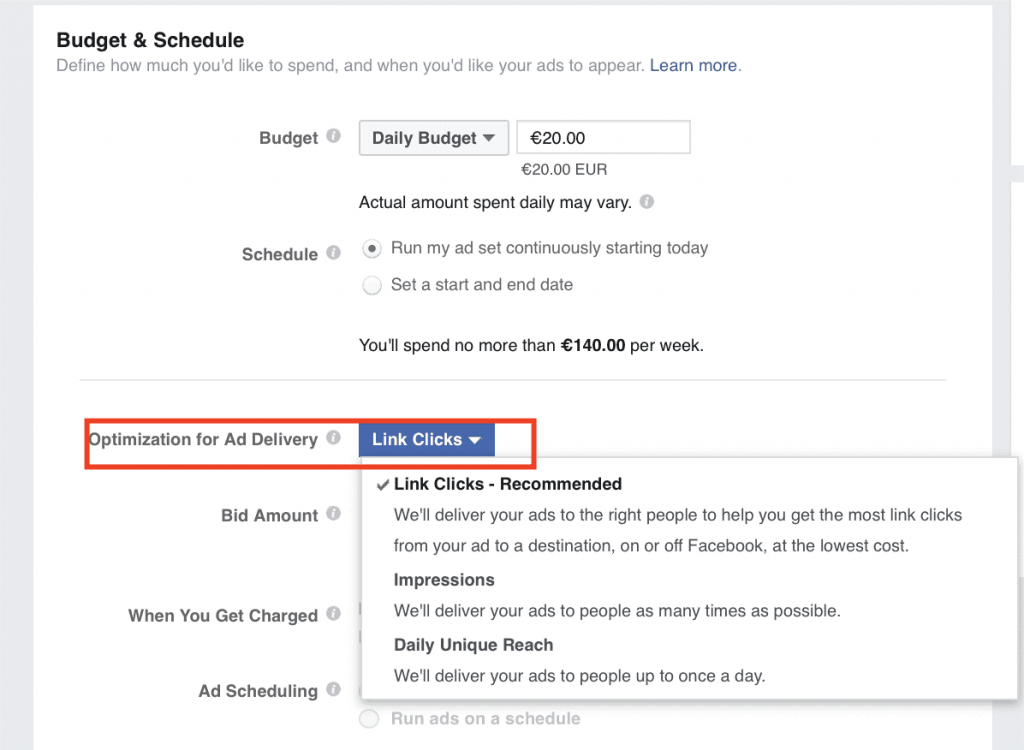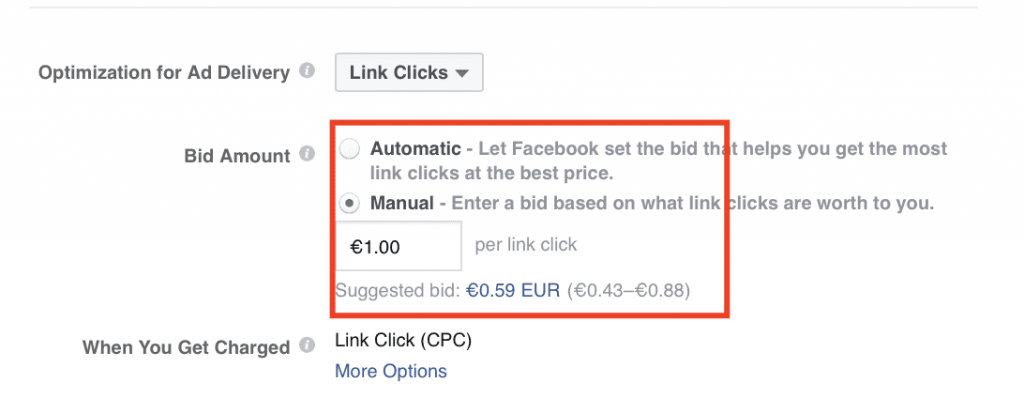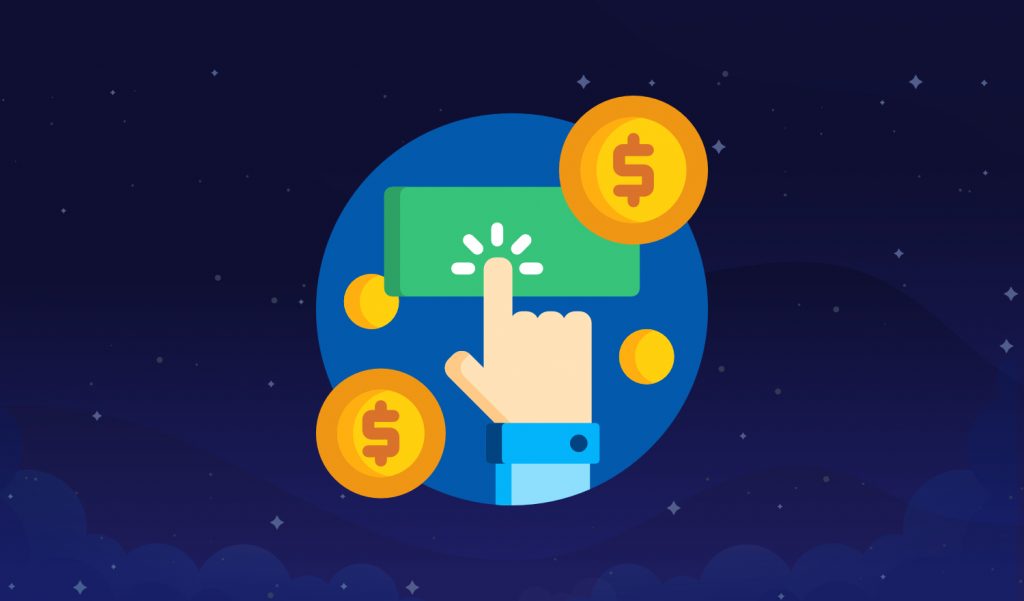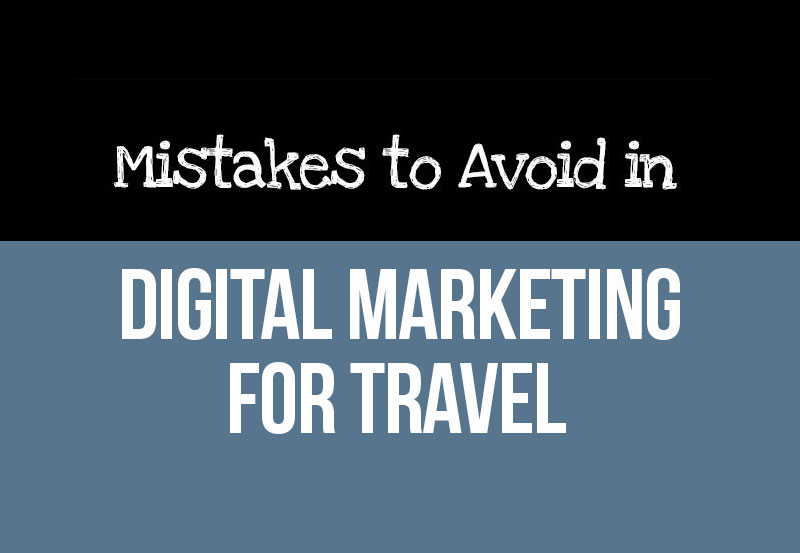Facebook Advertising for Travel Companies in 2020
Facebook is the most popular social media platform and is visited by almost 2 billion people daily.
Facebook is like a journal of life, and this huge amount of data allows Facebook to target users in an un-paralleled way.
It has become one of the best marketing platforms which is used by all sorts of businesses due to its huge reach and demographic targeting options.
Facebook Ads are very effective for travel businesses.
Due to its advanced targeting options, Facebook is a a goldmine for reaching and engaging with new customers.
Today, more and more people are using Facebook for to research and book their travel; including browsing hotels, resorts, holidays and as such it has become an indispensable tool for travel companies of all sizes.
With a very visual product and a fun subject to share online, there is lots of opportunity to get high levels of engagement, and subsequently low CPCs, for your travel business
Despite the current popularity of Facebook as a marketing tool, lots of travel businesses are still unaware of it’s potential.
So, we decided to write a Facebook Advertising guide for travel companies, to cover all important aspects of Facebook advertising.
Why use Facebook Ads?
Travel companies have realised the importance of social media platforms for attracting new business and engaging pre-existing customers.
Almost all tour and travel agencies, hotels, resorts, travel agents, and airlines actively use Facebook for marketing in some form.
Facebook is one of the most widely used digital advertising platforms and it has several advantages over other online advertising platforms.
Facebook allows you to create highly targeted ads which will be shown only to the audience which is more likely to buy your products or services.
Another often overlooked advantage of Facebook Ads is the fact through Instagram, a popular image sharing site is owned by Facebook, you can cross promote your ads to Instagram followers also.
With Facebook Ads you can create highly targeted ads and target users based on the following parameters:
- Location (City, State, Country, Postcode)
- Demographics (Age, Gender, Language)
- Behaviour
- Interests
- Relationship Status
- Age
- Birthday
- Education
- Workplace
As is clear from the above list, few other platforms can match the targeting capabilities of Facebook.
Facebook offers the option of re-targeting, which is quite like the remarketing ads offered by Google AdWords, as you can target users who have visited your site in the past.
Most travel businesses have Facebook pages which can be promoted to potential customers to increase page likes.
Liking a brand’s page allows the business to continue to reach out to the follower through targeted ads, as well as on-going exposure to the brands social posts.
Facebook Ads uses quite scary targeting to show your page to people it considers likely to be a customer based on their interests or behaviour.
Target a Specific Audience
Many marketers wrongly assume that showing your ad to millions of viewers will result in increased sales and profits.
Several studies have proved beyond doubt that targeted ad campaigns perform much better than generalised ones and this is a mistake which marketers continue to repeat.
Targeted ads, on the other hand, tend to have higher CTRs and conversions.
Unlike generalised ads, you are reaching people who are my likely to turn into a customer.
Lead Nurturing
Facebook allows travel companies to target users throughout the sales funnel.
Marketers can easily track the movement of a lead during the sales process and show them relevant ads at each stage.
Facebook also remains one of the most effective tools for lead nurturing, as there is a high chance that a user will use Facebook on a continuous basis from the time he first arrives on your site to the moment when he is finally ready to place an order for your travel products/services.
How to Create Facebook Ads
Creating targeted ads via Facebook is not difficult.
To make things easy for our readers, we’ve decided to show each step for creating a targeted Facebook ad campaign.
First, you need to head to the Facebook Ads Manager, which can be found in the left corner of the Facebook News feed under the explore tab.
Now you’ll need to click on the Audiences tab as shown in the image below:
Facebook uses three audience types:
- Saved Audiences
- Custom Audiences
- Lookalike Audiences
Facebook saved audiences are the audiences which you can define based on people’s interests, behaviour, age, and other metrics such as location.
You can create saved audiences in the campaign set up phase or later on in ads manager.
Once you decide to create an audience, Facebook will display a screen similar to this one:
As you can see in the above image, Facebook allows you to choose audiences based on their gender, age, languages, and it also gives you the option to exclude specific audiences based on attributes defined by you.
With interest-based targeting you can target people who are specifically interested in a subject directly related to the product or service which you are selling.
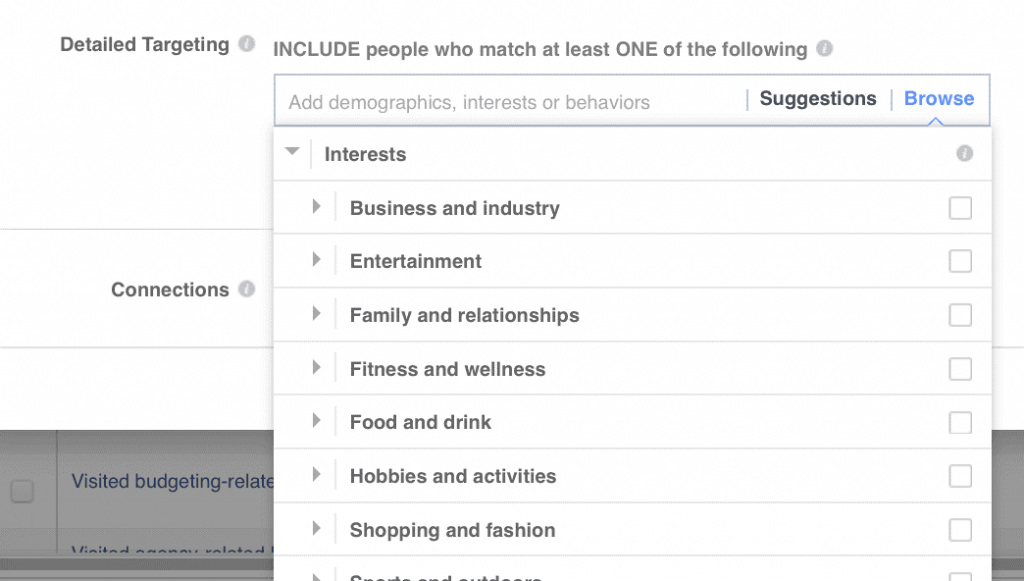
As shown in the above image, interest-based targeting is quite useful for screening out any uninterested viewer as your ads will be shown only to the people who are already interested in your services.
You can also use the behaviour-based targeting option listed under the detailed targeting tab as shown in the image below: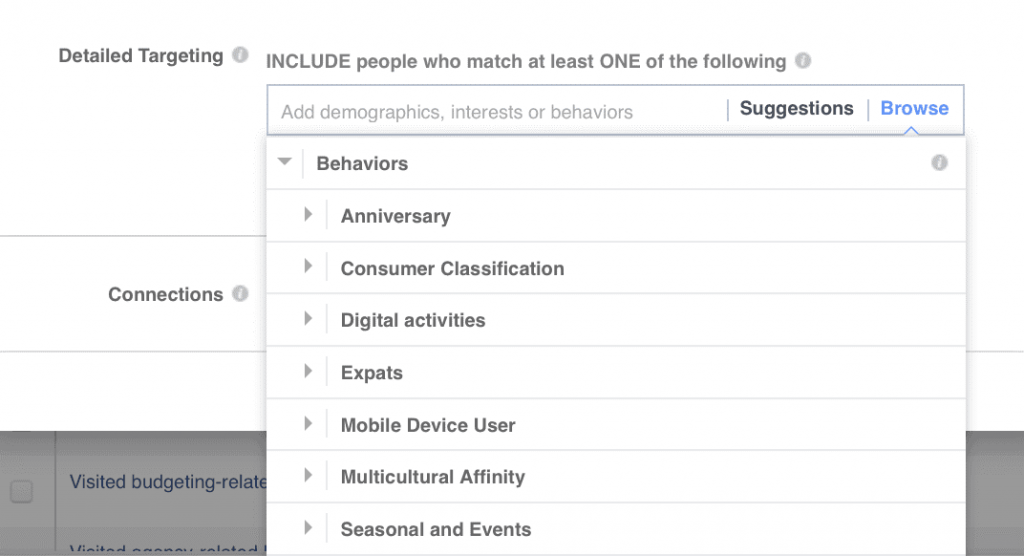
Here you will be able to choose people based on their behaviour and you can decide who will see your ad based on several factors such as anniversaries, digital activities, mobile device use, multicultural affinity etc.
To fully utilize the targeting capabilities of Facebook Ads platform, you’ll need the Custom audiences which are essentially audiences defined by you.
Custom audiences allow you to re-target past visitors of your site or people who have interacted with your content or mobile apps.
Facebook will show the following screen when you press the button for creating a custom audience for your advertising campaign:
You can create a custom audience in several ways as Facebook gives you plenty of options to target people whom you want to show ads.
You can upload files in CSX or TXT format containing information about your audience such as their phone numbers, email, mobile advertiser id, first name, last name, date of birth etc.
As is clearly shown in the above image, Facebook also allows you to create custom audiences on other parameters such as:
- People who may have interacted with your content on Facebook
- People who have visited your website or specific web pages on your site
- People who have taken a specific action in your app or game
Facebook lookalike audiences are quite similar to your existing audience and this feature essentially means that Facebook will use its own algorithm and will create an audience which will be quite similar to your existing audience.
You must already have a custom audience before creating a lookalike audience as Facebook uses your data to find lookalike audiences for you.
What are Dynamic Facebook Ads?
Facebook Dynamic Ads for Travel are a specific format of Facebook advertising which has been specifically created for travel businesses.
Dynamic ads allow your travel business to reach users across Facebook, Instagram and Facebook Audience network who are more likely to make a trip.
You can use dynamic ads to re-target users who may have started the booking process on your site but abandoned the process in between.
Dynamic ads also allow you to upload your travel catalogue along with prices after which specific deals or trips can be shown to your target audience.
You will need to implement Facebook Pixel on your site and then upload an inventory of all your trips.
Facebook allows you to add location, price, and availability of your trips which are then shown to your targeted audience.
Dynamic ads allow you to show ads to people who have shown an interest in your products and you can target them across multiple devices.
Dynamic ads are automated, which means that you’ll need to set them up only once and your campaigns are always on.
You can also show complimentary offers such as upgrades or any other related service to people who have booked a trip with you in the past.
Dynamic ads run on the right time based on your inventory and the actions taken by your potential customers as Facebook uses data collected via the Facebook Pixel and other methods to decide which time is best for showing these ads to a potential customer.
Due to several advantages over traditional Facebook campaigns, DTAs have gained popularity among the travel businesses since their launch and several travel businesses including some of the most well-known travel brands have already transitioned to Dynamic Travel Ads.
DTAs allow you to increase your ROI as your ads are only shown to an interested audience which allows you to reduce unnecessary ad spend. Travel products are known for the fluctuation in pricing and availability, which used to be a problem earlier as marketers had to update their ads on a regular basis. Dynamic ads allow you to only show up-to-date ads which are based on the data Facebook collects from your website.
Facebook’s algorithm automatically decides when to show an ad to a user based on his activity on your website or app and the data feed provided by your website.
Bidding and Optimisation
Bidding is one of the most crucial parts of any online advertising campaign and we will discuss this briefly here.
Facebook uses a three-tiered approach of an Ad Campaign, Ad Set, and an Ad as shown in the image below:
Facebook ad budgets are set at an ad set level and you will need separate budgets for different ad sets. Although, you still need to specify bids per click or impressions for each ad separately.
During the budget set up phase you’ll come across the following screen:
You can also set a lifetime budget for your ad set instead of a daily budget as shown in this image:
Facebook will divide your lifetime budget evenly across the dates chosen by you for your ad campaign.
You can also show the ad delivery optimisation method at this step according to your own needs and objectives.
Facebook offers 3 ad delivery optimisation method as shown in this image:
For most marketers Link Clicks is the perfect method for ad delivery although in some cases you may prefer to use Impressions instead of Link Clicks.
Facebook also allows you to set your own bid per click or per 1000 impressions as shown in this image:
You also get the option to set the bid manually or leave it up to Facebook by choosing the Automatic option.
Facebook will also show a suggested bid which is often in the form of a price range specifying the minimum and maximum bids for an ideal campaign.
Importance of Images and Videos
Facebook and Instagram are both visual mediums and videos and images are among the most prominent content on these 2 sites.
Facebook allows you to add videos and images to your Facebook pages and advertisements and you have plenty of options to show an attractive image to a potential customer via Facebook ads.
Visual imagery plays an even more important role for travel businesses as people are essentially looking for experiences which are best shown in visual medium.
You must also note that imagery is the best form of storytelling as the adage of “A picture is worth a thousand words” still holds true in this era of digital communication.
So, choose images and videos for your Facebook ads carefully as the success of your ad campaign will largely depend on them.
Conclusion
Facebook Advertising can be your secret weapon if done correctly.
Most travel companies nowadays realize the importance of Facebook ads and have started running their own ad campaigns.
Due to the nature of the travel industry, dynamic travel ads are better from the point of conversions and sales.
Facebook ads are one of the easiest to set up as compared to other advertising platforms and can be efficiently run with minimal investment of time and effort.
Travel businesses are a major user of Facebook ads as airlines, hotels, resorts, and travel agents are among the major spenders on Facebook.
Just follow the instructions given in this article to set up your own Facebook ad campaign using a targeted and focused approach.
By continuing to use the site, you agree to the use of cookies. more information
The cookie settings on this website are set to "allow cookies" to give you the best browsing experience possible. If you continue to use this website without changing your cookie settings or you click "Accept" below then you are consenting to this.
